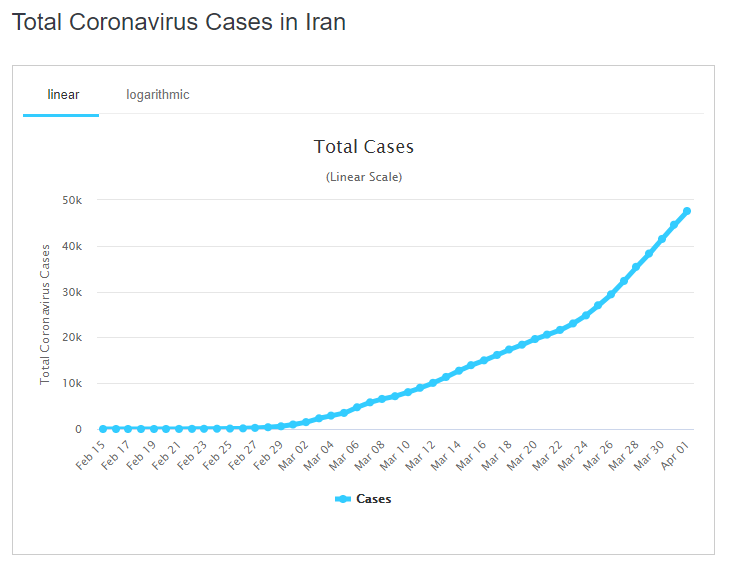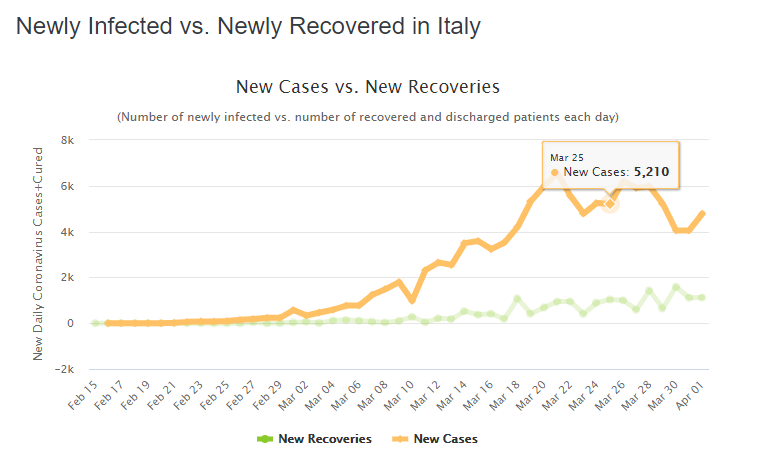How coronavirus in Canada compares to other countries as of April 2

Canada hit 10,000 known cases of COVID-19 in the early hours of Thursday, April 2 — two weeks after we saw our 600th case back on Wednesday, March 18.
That was also when we started gauging where we’re at in comparison to other affected countries.
In that first article, we found that Canada had been at least 10 days behind the then-most-affected countries of China, Italy, Iran, and Spain, which had reached 600 known cases on January 23, February 27, March 1, and March 8, respectively.
(These numbers, and the ones to follow in the article below, are supplied by Worldometer, a site run by an international team of developers, researchers, and volunteers that uses an algorithm to pull from a list of reputable sources including government agencies, the United Nations, and the World Health Organization to create a live counter of known coronavirus cases around the world.
It should also be noted that the numbers presented by Worldometer and reported below are estimates based on the latest information, and that the number of known cases in any given country are merely a representation of tested cases and therefore do not accurately represent the unknowable number of actual cases of coronavirus — though it’s the best we have to go off of right now.)
- See also:
While no two countries can ever be directly compared — population density, cultural customs, and speed of government responses are all factors that impact how quickly a virus can spread — taking a look at other countries could give us a bit of an idea of what is ahead for Canada, seeing as we were hit by the virus weeks later.
In the two weeks since hitting their own 600-mark, China saw total known cases rise to 31,161, Italy to 15,113, Iran to 11,364, Spain to 11,826, the US to 42,781, and Germany to 19,878 — meaning that Canada’s virus spread is, as far as detected cases go, quite a bit slower than some of these hardest hit countries.

Canada cases (worldometer)
We’re definitely looking closer to Iran and Spain than we are to China or the US, so let’s take a look at where those two countries were at a week after hitting the 10,000 mark that we just passed.
Iran saw an increase to 18,407 known cases by the following week, while Spain jumped up to 42,058 — highlighting the immense difference in known cases that countries can see over the same course of time.

Iran cases (worldometer)
For some context, the US currently has the world’s largest number of known cases at 237,877 as of April 2.
One week after hitting 9,197 known cases on March 18, America had more than sextupled their count to 68,211 by March 25.

USA cases (worldometer)
Our two-week curve since hitting 600 has already proven itself to be not nearly as steep as our neighbours to the south, however, so by the limited numbers available to us we, at the very least, have reason to suspect that we will not be hit as hard as America.
Our population is about 1/10th the size of the States, however, so factoring that into the equation finds America with an average of 719 cases per one million people, while Canada sits at 295 per one million people.
The worldwide average is at 128.9 known cases per one million people, so while we’re not doing nearly as bad as the US, we’re definitely still in the thick of it all.

worldometer
Futures are, naturally, going to look quite bleak if we’re only taking into account statistics from the most-affected countries, though.
As previously mentioned in last week’s international update, there are some other countries out there that have managed to keep infection rates to a minimum even after cresting 600 known cases.
South Korea jumped from 602 cases to 7,313 cases in the two weeks between February 23 and March 8 but has since seen a significant decrease in daily cases in the week, with only 101 new cases detected on April 1.

South Korea cases (worldometer)
Denmark has also seen a much slower uptick in new cases since they hit 600 on March 12, with a total of 1,724 as of March 25 and just 3,107 known cases reported by April 1.
While it appears that Canada is angling a little closer to Iran’s and Spain’s rate of infection than South Korea’s or Denmark’s, we do, fortunately, still have time to act to keep Canada from the exponential spike seen in those even harder-hit countries.
As for when Canada might begin to see an end to this pandemic, well, those numbers haven’t changed, seeing as no large country other than China has yet begun reporting a decrease in active cases.
So here’s what we wrote about it two weeks ago:
The first day that China started to report fewer infected people than the day before was February 18 — a total of 27 days after they hit 600 known cases on January 23.

Worldometer
The country reported a significant decrease in the number of new cases around the middle of February, marking roughly one month after China implemented strict measures that included quarantining Wuhan, shutting down rail lines, and erecting roadblocks.
Canada’s and China’s populations, government responses, geography, and infection rates are quite different, but given that China is the only large country that has begun to report a decrease in the number of infected cases, it is the only basis we can currently use to predict when Canada may begin to recover.
That 27 days after seeing a 600th case would, hypothetically, find Canada beginning to see a decrease in the number of infected people by Tuesday, April 14.
It should be noted, however, that Italy reached 27 days after their 600th known case as of last week, and while the graph showing the number of active cases has begun a slight curve along the x axis, their 5,210 new cases and only 1,036 recoveries reported on March 25 does not exactly reinforce the whole “recovery begins after 27 days” theory.

Italy recoveries (worldometer)
Save for China, no other large, hard-hit country has even begun to see more recoveries than new cases reported on any given day.
It must also be kept in mind that there are countless cases of coronavirus throughout the world that are going unreported due to limited testing supplies, government regulations, and the simple fact that many people will have very mild symptoms and just stay home until they get better.
This also means that the accuracy on the number of recovered cases is just as limited.
Given the information we do have, it appears that the world as a whole remains on the left side of the curve we’re all trying to flatten.

Active cases throughout the world (worldometer)

Recoveries vs new cases per day (worldometer)
And while there is nothing “lucky” about the current state of the world, Canada is fortunate to have been hit by the virus weeks later than some other countries — giving us time to see the severity of the situation and act accordingly.
We may not yet be on full lock-down like some countries are, but the next few days will be among the most critical for curbing the spread of coronavirus throughout the country. The only better time to act would have been during the days we’ve already lost.
So stay home, self-isolate, physical distance, wash your hands, and know that the sacrifices you make today do have an impact on whether or not Canada will see cases in the tens or hundreds of thousands in the weeks to come.

